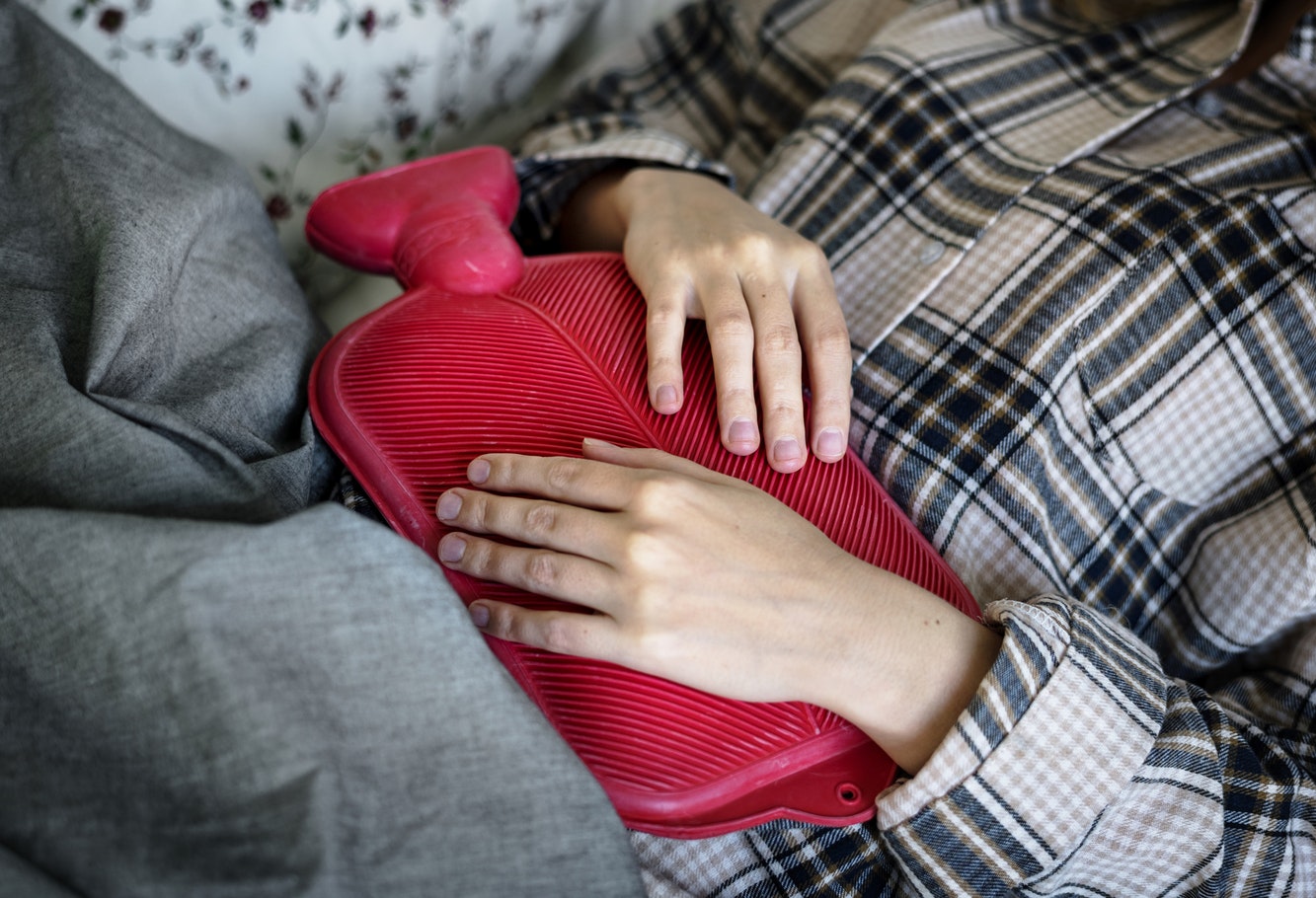
Body + Mind is reader-supported. We may earn an affiliate commission when you buy through some of the links on our site.
Burning sensations when urinating, increasing urges to urinate and recurring lower abdominal pain prompt many women to make an appointment with their physician to get antibiotics to treat yet another bladder infection. But when they undergo testing, their doctor informs them no infection exists. Yet these symptoms still deserve prompt medical attention, as they may indicate a different underlying disorder that leaves many wondering: “what is interstitial cystitis in women, anway?”
Interstitial cystitis affects approximately 3 to 8 million American women. Because the symptoms mirror those of so many other disorders, many women suffer untreated. Here’s what all women should know about interstitial cystitis, so they can seek the care they need to soothe the burn.
While bladder infections usually occur for only a short duration, interstitial cystitis (IC) is a chronic inflammatory condition of the bladder. While the symptoms often are similar, standard urine screenings will show no signs of a urinary tract infection. Some women who suffer frequent bladder infections go on to develop IC, but medical researchers have yet to establish a causal link.
One reason women may suffer IC more often than men has to do with the differences in male and female urinary tracts. While men have a lengthy urethra, women have a very short one, making it easier for bacteria and other irritants to enter the bladder from outside. Furthermore, as some researchers believe IC has an autoimmune component, the fact that women suffer from autoimmune disorders at higher rates than men may also contribute to the gender difference.
Many of the diseases affecting the urinary or reproductive systems in women share similar symptoms. Women experiencing IC often suffer pain in the pelvic region, burning with urination, a frequent urge to urinate, a feeling of fullness even immediately after voiding the bladder and pain during intercourse. Many women also endure chronic abdominal and low back pain.
The persistent need to urinate often results in expelling only a few drops at a time, only to feel the urge to go again within minutes. Women suffering from IC may run to the restroom as many as 60 times per day, which significantly impacts a woman’s overall quality of life.
Other conditions which may trigger identical symptoms outside of bladder infection include yeast infections, overactive bladder syndrome, certain sexually transmitted diseases and endometriosis. No definitive test exists to confirm a diagnosis of IC. Rather, diagnosing IC often means labeling it as a disease of exclusion when tests for other conditions fail to show positive results.
Doctors may request women keep a journal of their suspected IC symptoms, such as how frequently they urinate and the amount of pain they experience when they do. Other physicians use output testing in place of or as a supplement to a written journal by measuring the amount of urine expelled each time they use the restroom.
Some women with IC find their symptoms come and go and interfere little with their day-to-day lives. Others with severe cases may find themselves unable to work or even drive more than a mile or two from home due to the constant sensation of urgency.
Women who find themselves experiencing increased urine output as well as pain when voiding their bladders benefit from seeing their physician for a blood sugar test to rule out diabetes as a possible cause. If the increase in urine output also comes with dry mouth and thirst, diabetes may play a role — a disease which fortunately is manageable through lifestyle changes and medication.
While many women find it difficult to determine when their symptoms become severe enough to require medical intervention, the earlier they seek treatment, the better. Arriving at a diagnosis of IC takes time, and the sooner women begin ruling out other disorders, the better.
Treatments for IC include making lifestyle changes. As some health care professionals believe allergies may cause or exacerbate IC, physicians may request patients try an elimination diet to rule out allergens as a potential cause.
Some women respond well to physical therapy to strengthen the pelvic floor muscles. For those women needing prescription meds, many physicians prescribe antihistamines or medications which help numb nerve pain, such as gabapentin. Other doctors may recommend IC cocktails inserted directly into the bladder via catheter.
In extreme cases, bladder pain and spasms may respond well to Botox treatments or medications which lessen the immune response to ease spasms. The last line of treatment involves major surgery, and most health care professionals recommend women suffering from IC seek a second opinion before going under the knife. Women who develop bladder ulcers as a result of IC benefit from laser surgery to remove the painful tissue.
Those wondering “what is interstitial cystitis in women?” now should have an answer — IC can truly disrupt a woman’s entire life. However, hope does exist for a cure, and many women respond positively to current medical procedures to treat the disease. Because early treatment may lessen the long-term severity of the condition, women experiencing any IC symptoms can speed their return to health and reduce the urge to go by making an appointment with their health care provider.